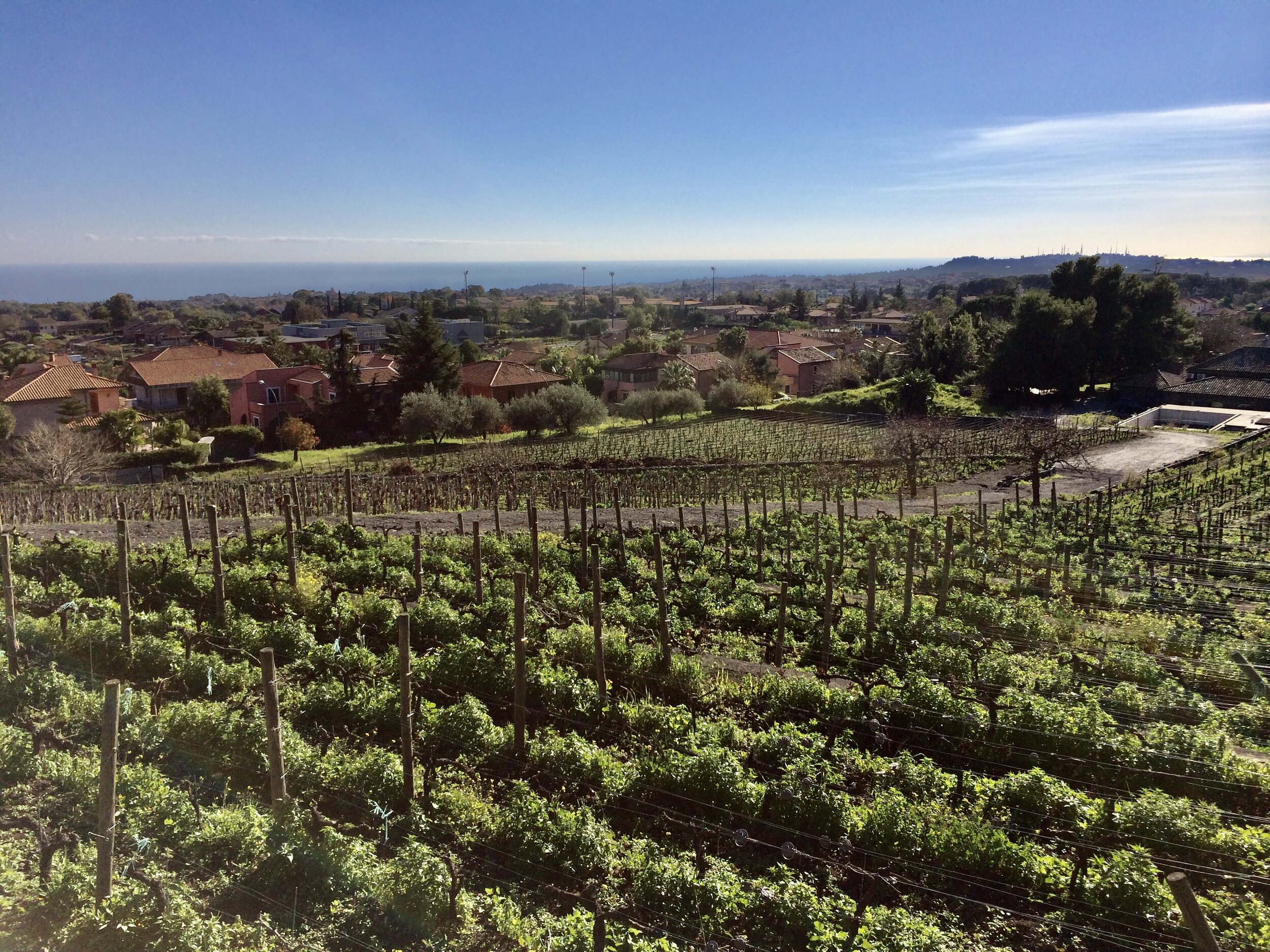Food and Wine
I would like to start with the culinary connection between Sicily and Greece, to expand on my points from the Introduction to the Region post. Although Sicilian cuisine has many cultural influences, including Spanish, French and Arab, the Greek influence is palatable. For example, I already mentioned the arancini made with rice and saffron which is thanks to the Arab influence, and you can read more in this article published on The Thinking Traveller’s site. The Greeks, of course, were on the land long ‘before the common era’ or if you prefer ‘before Christ’ and culinarily speaking, the shared sea makes fresh fish an obvious choice. However, the use of olives, broad beans and pistachio are frequent guests in both cuisines. You will even find some ‘pies’ such as the gattò di patate (a potato pie) which resembles the many spinach (Spanakopita) and cheese (Tiropita) pies found in bakeries all over Greece.
You may have noticed that I have a lot of favorites. Although this is true, I am still discerning with how I use the sacred term. In terms of pasta, the Sicilian Pasta Alla Norma is my true favorite. Just to be clear: Roman pastas are my favorite pastas as a regional group, let’s say, but the ‘Norma’ is my favorite single pasta. For one, I prefer short pasta over long pasta. Secondly, eggplant (or aubergine) is a vegetable I adore. When you order this dish in Sicilia (at any of the restaurants I recommend!) the tomato sauce will be rich and fresh and the topping of salty ricotta (ricotta salata, in fact) is the perfect finish. If you want to try your hand at cooking the delicious Pasta Alla Norma, follow this NY Times cooking recipe. In Italy, eggplant is associated with Sicilian cuisine because of this famous Sicilian (and specifically Catanese) dish. A famous antipasto dish with eggplant is the Caponata. The eggplant is combined with salty capers (sometimes peppers, olives, pine nuts and raisins) in a sweet and salty vinegar sauce. It is so delicious. You will find these ingredients and flavors in other tradition dishes, such as paired with fresh fish.
The granita is a refreshing dessert (or afternoon treat) that hails from Sicily. It is similar to a ‘slushie’ made with ice, water and various flavors. Try all of its glory at Bam bar in Taormina. Of course, I cannot neglect, arguably, the most famous Sicilian dessert: cannoli. Hallowed crispy fried pastry filled with ricotta and (traditionally) dotted with chocolate chips on either end.
Wine
As mentioned briefly, I spent the Christmas of 2014 on the east coast of Sicily. We visited the winery Benanti, now growing in popularity as part of the ‘Etna’ wine scene. The winery is located on the slopes of the great Sicilian volcano, and a visit is well-worth it. We organized a cooking class and made a memorable day.
I loved their Etna Bianco, specifically White Superiore Pietramarina. It is made with 100% carricante grapes. The tasting notes from the Cream Wine website describe the wine as “showcas[ing] flint, salinity and minerality with hints of orange, lemon flower and apple. Dry on the palate, Pietra Marina has gorgeous acidity and persistence.”
For red grapes, Nerello Mascalese and Nerello Cappuccio are both found in the DOC Etna wines. The region of Sicily is also famous for Nero d'Avola, a full-bodied red grape, so make time to try all of the above during your stay.
Planeta is another popular Etna winery with good wines to seek out in restaurants in and out of Sicily (as they do have a bigger distribution than Benanti), and you can also pay a visit while on the East coast.

